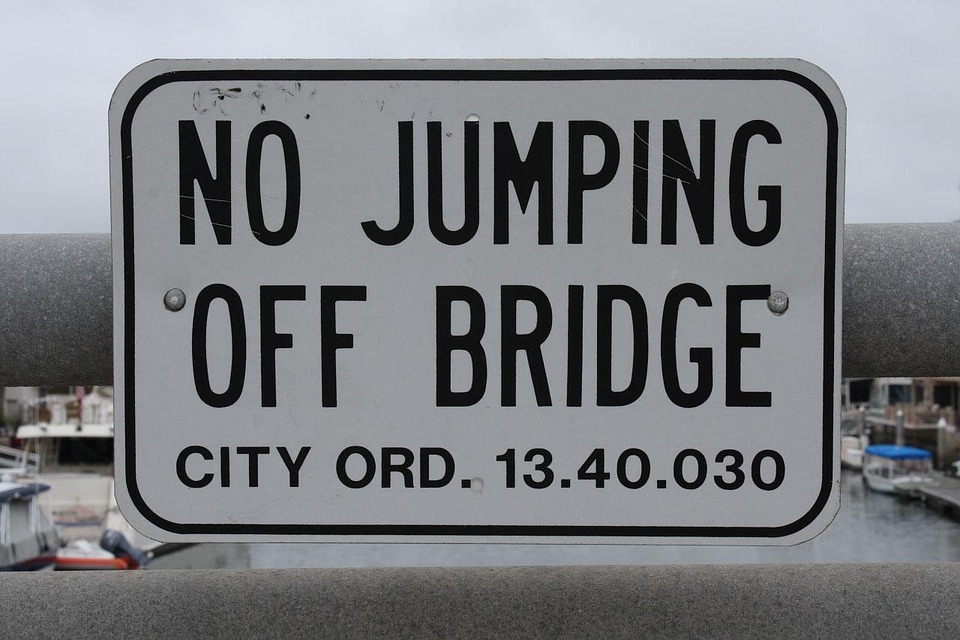Alright, let’s unpack how agri-trade compliance rules work. This is a complex and ever-evolving landscape, so let’s break it down systematically.
How do agri trade compliance rules work? Essentially, they’re the set of regulations, standards, and agreements that govern the international exchange of agricultural products. They exist to ensure fair trade practices, protect human, animal, and plant health, and maintain consumer confidence in the safety and quality of imported and exported goods. We’re not just talking about slapping a tariff on a shipment; it’s a much more intricate web than that. Think of it as a multi-layered defense system designed to balance economic opportunity with public safety and national interests. Failing to comply can result in anything from delays and fines to outright rejection of shipments, reputational damage, and even legal action. So, understanding these rules is crucial for anyone involved in the import or export of agricultural commodities.
The Foundation: International Agreements and Organizations
The cornerstone of agri-trade compliance is built upon a foundation of international agreements and the organizations that oversee them. The most significant player here is the World Trade Organization (WTO). The WTO provides a framework for trade negotiations, dispute resolution, and the enforcement of trade rules among its member countries. Key WTO agreements that directly impact agricultural trade include:
-
Agreement on Agriculture (AoA): This agreement aims to reform agricultural trade and make it fairer and more market-oriented. It addresses three main pillars: market access (tariffs and quotas), domestic support (subsidies), and export subsidies. The AoA seeks to reduce trade-distorting subsidies and improve market access for agricultural products. However, it’s a highly debated agreement, with many developing countries arguing that it still favors developed nations (Josling, 2006).
-
Agreement on the Application of Sanitary and Phytosanitary Measures (SPS Agreement): This agreement allows countries to set standards to protect human, animal, and plant health, but it mandates that these standards be based on scientific principles and not be used as disguised barriers to trade. This is where things like import restrictions based on pest presence, food safety regulations, and animal disease control measures come into play. The SPS Agreement references international standards developed by organizations like the Codex Alimentarius Commission for food safety, the World Organisation for Animal Health (OIE) for animal health, and the International Plant Protection Convention (IPPC) for plant health.
- Agreement on Technical Barriers to Trade (TBT Agreement): Similar to the SPS Agreement, the TBT Agreement addresses technical regulations, standards, testing, and certification procedures. It aims to ensure that these measures don’t create unnecessary obstacles to trade. This can include labeling requirements, packaging standards, and quality controls.
Beyond the WTO, other international organizations play vital roles:
-
Codex Alimentarius Commission: A joint FAO/WHO body, Codex develops international food standards, guidelines, and codes of practice to ensure food safety and fair practices in the food trade. Codex standards are often used as a benchmark for national regulations.
-
World Organisation for Animal Health (OIE): The OIE sets standards for animal health and disease control. Its recommendations are used by countries to justify import restrictions based on animal health risks.
- International Plant Protection Convention (IPPC): The IPPC sets standards for plant health and pest control. It provides a framework for international cooperation to prevent the spread of plant pests and diseases.
National Regulations and Implementation
While international agreements provide the overarching framework, individual countries implement these agreements through their own national regulations. These regulations can vary significantly from country to country, reflecting differences in national priorities, consumer preferences, and risk assessments.
In the United States, for example, the key agencies involved in agri-trade compliance include:
-
United States Department of Agriculture (USDA): The USDA’s Animal and Plant Health Inspection Service (APHIS) is responsible for protecting U.S. agriculture from pests and diseases. APHIS develops and enforces regulations related to the import and export of animals, plants, and agricultural products. The USDA’s Food Safety and Inspection Service (FSIS) ensures that meat, poultry, and processed egg products are safe, wholesome, and accurately labeled.
-
Food and Drug Administration (FDA): The FDA regulates the safety of most food products, including seafood, produce, and processed foods. It also oversees labeling requirements and enforces food safety standards.
- Customs and Border Protection (CBP): CBP is responsible for enforcing U.S. trade laws and regulations at ports of entry. CBP officers inspect imported agricultural products to ensure compliance with U.S. standards.
In the European Union (EU), the European Commission is responsible for setting agri-trade policy and regulations. Key areas of regulation include:
-
Common Agricultural Policy (CAP): The CAP is the EU’s agricultural policy, which aims to support farmers, ensure food security, and protect the environment. The CAP includes measures related to market support, direct payments to farmers, and rural development.
-
Sanitary and Phytosanitary (SPS) Measures: The EU has strict SPS regulations to protect human, animal, and plant health. These regulations cover a wide range of issues, including food safety, animal disease control, and plant pest control.
- Customs Union: The EU is a customs union, meaning that there are no tariffs or other trade barriers between member states. The EU also has a common external tariff policy for imports from non-EU countries.
Key Elements of Agri-Trade Compliance
Navigating agri-trade compliance requires attention to several key elements:
-
Tariffs and Quotas: These are the most common trade barriers. Tariffs are taxes imposed on imported goods, while quotas are limits on the quantity of goods that can be imported. Understanding the applicable tariffs and quotas for specific products and countries is essential for calculating the cost of trade. This information is usually available on the websites of customs authorities and trade agencies.
-
Sanitary and Phytosanitary (SPS) Requirements: These regulations aim to protect human, animal, and plant health. They often involve import permits, health certificates, inspections, and testing. Importers must ensure that their products meet the SPS requirements of the importing country. For example, exporting meat products often requires a health certificate issued by a veterinarian from the exporting country.
-
Technical Barriers to Trade (TBT) Regulations: These regulations cover technical standards, labeling requirements, and packaging standards. They aim to ensure that products meet certain quality and safety standards. Importers must comply with the TBT regulations of the importing country to avoid delays or rejection of shipments. For example, food labeling regulations often require specific information about the product’s ingredients, nutritional content, and country of origin.
-
Country of Origin Labeling (COOL): COOL regulations require retailers to inform consumers about the country of origin of certain agricultural products, such as meat, fruits, and vegetables. COOL aims to provide consumers with information to make informed purchasing decisions.
-
Food Safety Standards: These standards ensure that food products are safe for consumption. They cover a wide range of issues, including food processing, handling, and storage. Importers and exporters must comply with the food safety standards of the importing country. Examples include Hazard Analysis and Critical Control Points (HACCP) systems and Good Manufacturing Practices (GMP).
-
Intellectual Property Rights (IPR): Protecting IPR is crucial in agri-trade, particularly for genetically modified crops and other innovative agricultural technologies. Counterfeit or pirated goods can undermine legitimate trade and harm consumers.
- Documentation and Recordkeeping: Accurate documentation is essential for demonstrating compliance with trade regulations. This includes invoices, bills of lading, certificates of origin, and other relevant documents. Maintaining thorough records can help to avoid delays and disputes.
Challenges and Future Trends
Agri-trade compliance is not without its challenges. Some of the key challenges include:
-
Complexity and Variability: The sheer complexity and variability of regulations across different countries can be overwhelming for businesses. Keeping up with the latest changes and ensuring compliance can be a significant burden, especially for small and medium-sized enterprises (SMEs).
-
Lack of Harmonization: The lack of harmonization of regulations across countries can create trade barriers. Different countries may have different standards for the same product, making it difficult for businesses to export to multiple markets.
-
Enforcement Issues: Enforcement of trade regulations can be inconsistent, leading to unfair competition and trade disputes. Some countries may have weak enforcement mechanisms, allowing non-compliant products to enter the market.
- Geopolitical Factors: Trade disputes and political tensions can disrupt agri-trade flows and create uncertainty for businesses. Trade wars and sanctions can lead to retaliatory measures and increased trade barriers.
Looking ahead, several trends are shaping the future of agri-trade compliance:
-
Increased Focus on Sustainability: Consumers are increasingly demanding sustainable and ethically sourced agricultural products. This is leading to stricter regulations on environmental protection, animal welfare, and labor practices.
-
Technological Advancements: Technology is playing an increasingly important role in agri-trade compliance. Blockchain technology, for example, can be used to track and trace agricultural products throughout the supply chain, improving transparency and traceability.
-
Greater Transparency and Traceability: Consumers are demanding greater transparency and traceability in the food supply chain. This is leading to increased pressure on businesses to provide information about the origin, production methods, and safety of their products.
- Regional Trade Agreements: Regional trade agreements, such as the Comprehensive and Progressive Agreement for Trans-Pacific Partnership (CPTPP) and the African Continental Free Trade Area (AfCFTA), are reshaping global trade patterns. These agreements often include provisions on agricultural trade and compliance.
Staying Compliant: Best Practices
So, what can businesses do to navigate this complex landscape and ensure compliance? Here are a few best practices:
-
Conduct Thorough Research: Before exporting or importing any agricultural product, it is essential to conduct thorough research on the applicable regulations in the importing country. Consult with experts, trade associations, and government agencies to ensure that you have a clear understanding of the requirements.
-
Develop a Compliance Program: Implement a comprehensive compliance program that includes policies and procedures for meeting all applicable trade regulations. This program should cover all aspects of the trade process, from sourcing and production to packaging and labeling.
-
Train Your Staff: Provide training to your staff on trade regulations and compliance procedures. This will help to ensure that everyone in your organization is aware of the requirements and knows how to comply with them.
-
Use Technology: Utilize technology to automate and streamline compliance processes. This can include using software to track shipments, generate compliance documents, and monitor regulatory changes.
-
Work with Experienced Partners: Partner with experienced freight forwarders, customs brokers, and other trade professionals who can help you navigate the complexities of agri-trade compliance.
- Stay Informed: Stay up-to-date on the latest changes in trade regulations. Subscribe to industry newsletters, attend trade shows, and participate in webinars to stay informed.
In conclusion, navigating agri-trade compliance requires a deep understanding of international agreements, national regulations, and key compliance elements. It also requires a proactive approach, including thorough research, a comprehensive compliance program, and ongoing monitoring of regulatory changes. By following these best practices, businesses can minimize the risk of non-compliance and successfully participate in the global agri-trade market. It is a demanding field, but with diligent effort and a commitment to best practices, success is certainly achievable.
References:
- Josling, T. (2006). The WTO Agreement on Agriculture: A review. IFPRI.
- World Trade Organization (WTO). (n.d.). Agriculture. Retrieved from wto.org
- United States Department of Agriculture (USDA). (n.d.). usda.gov
- Food and Drug Administration (FDA). (n.d.). fda.gov
- European Commission. (n.d.). Agriculture and rural development. Retrieved from ec.europa.eu
- Codex Alimentarius Commission. (n.d.). fao.org/fao-who-codexalimentarius
- World Organisation for Animal Health (OIE). (n.d.). oie.int
- International Plant Protection Convention (IPPC). (n.d.). ippc.int
FAQs on Agri-Trade Compliance
Q: What’s the biggest mistake companies make when trying to comply with agri-trade regulations?
A: Overconfidence. Many companies assume that because they understand domestic regulations, international rules will be similar. They also often underestimate the importance of accurate documentation and the need for proactive communication with regulatory agencies. Rushing the process and not seeking expert advice can be costly.
Q: How often do agri-trade regulations change?
A: It varies. Some regulations remain stable for years, while others are updated frequently, sometimes even monthly. Factors like disease outbreaks, food safety incidents, and evolving international trade agreements can trigger regulatory changes. That’s why continuous monitoring and adaptation are crucial.
Q: Is it more difficult for small businesses to comply with agri-trade regulations than for large corporations?
A: Yes, generally. Small businesses often lack the resources (financial, personnel, and expertise) to navigate the complex regulatory landscape. They may not have dedicated compliance officers or the ability to invest in sophisticated compliance software. However, many government agencies and trade associations offer resources and support specifically for SMEs.
Q: What are the consequences of non-compliance with agri-trade regulations?
A: The consequences can be severe, ranging from shipment delays and fines to product recalls, import/export bans, and even criminal charges. The severity depends on the nature of the violation and the regulations involved. Beyond the direct financial costs, non-compliance can also damage a company’s reputation and erode customer trust.
Q: What is the role of customs brokers in agri-trade compliance?
A: Customs brokers are licensed professionals who act as intermediaries between importers/exporters and customs authorities. They have expertise in customs regulations, tariffs, and documentation requirements. They can help businesses clear customs efficiently, avoid penalties, and ensure compliance with all applicable regulations. They can handle the complexities of paperwork, classification, and duty calculation, freeing up businesses to focus on other aspects of their operations.
Q: How can technology help with agri-trade compliance?
A: Technology offers several solutions, including:
- Compliance software: Automates the process of tracking regulatory changes, generating compliance documents, and managing trade data.
- Blockchain: Enhances transparency and traceability throughout the supply chain.
- Data analytics: Identifies potential compliance risks and helps businesses make informed decisions.
- Electronic documentation: Streamlines the process of submitting customs declarations and other required documents.
Q: What resources are available to help businesses comply with agri-trade regulations?
A: A wealth of resources exist, including:
- Government agencies: USDA, FDA, CBP (in the US), European Commission (in the EU), and equivalent agencies in other countries.
- Trade associations: Industry-specific associations often provide compliance guidance and training.
- Consulting firms: Offer expert advice and support on agri-trade compliance.
- Online databases: Provide access to regulations, standards, and other relevant information.
- Webinars and training programs: Offer education and training on various aspects of agri-trade compliance.
Q: How does Brexit impact agri-trade compliance?
A: Brexit has significantly altered agri-trade compliance for businesses trading between the UK and the EU. New customs procedures, sanitary and phytosanitary requirements, and documentation are now required. Businesses need to familiarize themselves with the new rules and regulations to ensure compliance. The UK and the EU also have separate trade agreements with other countries, which can affect agri-trade compliance.
Q: What is the future of agri-trade compliance?
A: The future of agri-trade compliance is likely to be characterized by increased complexity, greater scrutiny, and greater reliance on technology. Expect to see more stringent regulations related to sustainability, food safety, and traceability. Businesses that proactively invest in compliance and embrace technological solutions will be best positioned for success in the evolving global agri-trade market.





